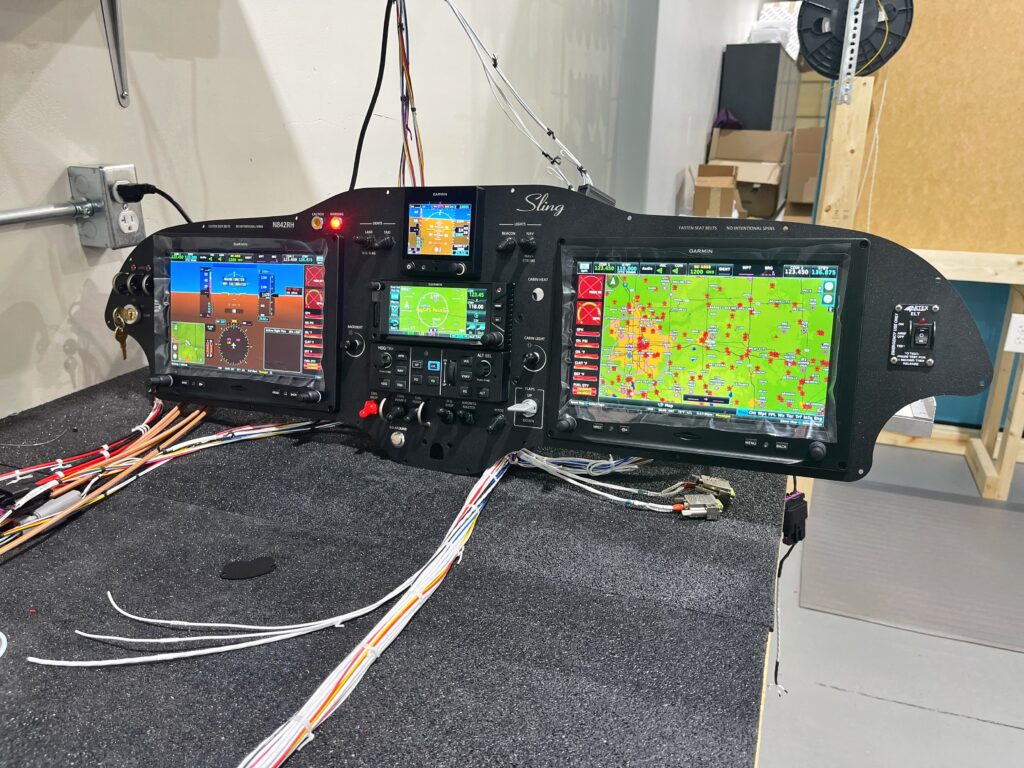The navigation avionics and engine management systems each have a TCW Integrated Battery Backup System (IBBS). The backup systems provide essential power in the event that one or both alternators in the Rotax 912iS engine should fail. There are 2 battery power units that have to be mounted someplace. I’ve found a spot on the fuselage rib, behind the parachute compartment that is within comfortable reach of the associated wiring harness connectors.
I thought that the batteries could use more support than they would get, were they attached directly to the rib. I designed and fabricated doubler plates to reinforce the rib. The batteries are fastened to the doublers.
I’ve had to consider that one day the battery units will have to be replaced. It won’t be easy, but I will be able to get to them from the front, after I remove the pilot side display and the remote LRUs and vertical rack that sit behind it.

